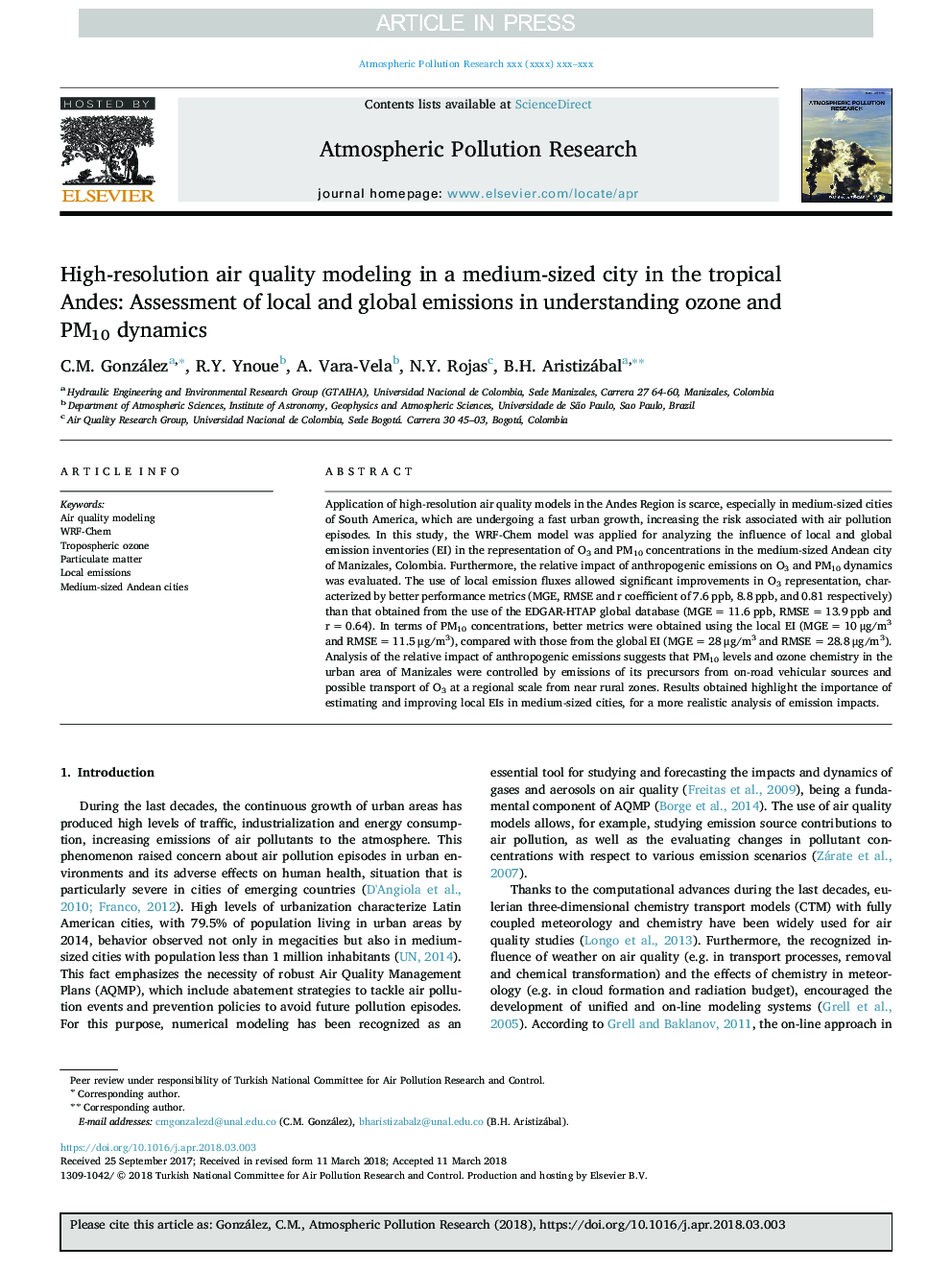| Article ID | Journal | Published Year | Pages | File Type |
|---|---|---|---|---|
| 8946175 | Atmospheric Pollution Research | 2018 | 15 Pages |
Abstract
Application of high-resolution air quality models in the Andes Region is scarce, especially in medium-sized cities of South America, which are undergoing a fast urban growth, increasing the risk associated with air pollution episodes. In this study, the WRF-Chem model was applied for analyzing the influence of local and global emission inventories (EI) in the representation of O3 and PM10 concentrations in the medium-sized Andean city of Manizales, Colombia. Furthermore, the relative impact of anthropogenic emissions on O3 and PM10 dynamics was evaluated. The use of local emission fluxes allowed significant improvements in O3 representation, characterized by better performance metrics (MGE, RMSE and r coefficient of 7.6â¯ppb, 8.8â¯ppb, and 0.81 respectively) than that obtained from the use of the EDGAR-HTAP global database (MGEâ¯=â¯11.6â¯ppb, RMSEâ¯=â¯13.9â¯ppb and râ¯=â¯0.64). In terms of PM10 concentrations, better metrics were obtained using the local EI (MGEâ¯=â¯10â¯Î¼g/m3 and RMSEâ¯=â¯11.5â¯Î¼g/m3), compared with those from the global EI (MGEâ¯=â¯28â¯Î¼g/m3 and RMSEâ¯=â¯28.8â¯Î¼g/m3). Analysis of the relative impact of anthropogenic emissions suggests that PM10 levels and ozone chemistry in the urban area of Manizales were controlled by emissions of its precursors from on-road vehicular sources and possible transport of O3 at a regional scale from near rural zones. Results obtained highlight the importance of estimating and improving local EIs in medium-sized cities, for a more realistic analysis of emission impacts.
Related Topics
Physical Sciences and Engineering
Earth and Planetary Sciences
Atmospheric Science
Authors
C.M. González, R.Y. Ynoue, A. Vara-Vela, N.Y. Rojas, B.H. Aristizábal,
